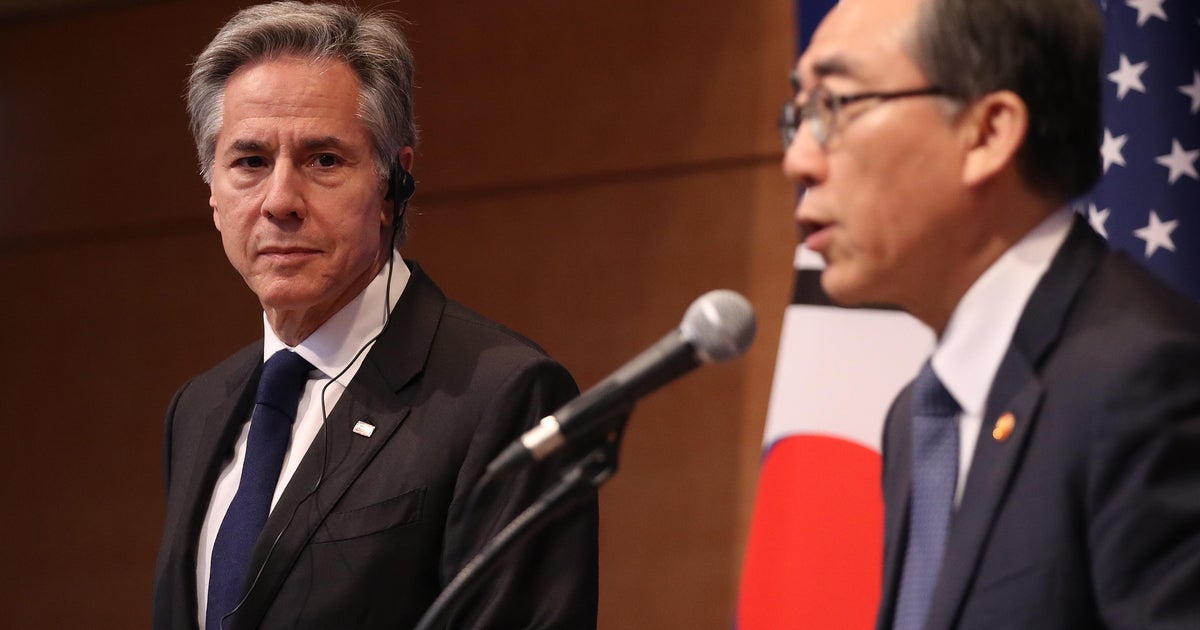NASA confident Russia will bring U.S. astronaut home from International Space Station as planned
Despite Russia's invasion of Ukraine and worsening international relations, joint operation of the International Space Station continues normally. Plans remain in place to bring NASA astronaut Mark Vande Hei back to Earth as planned aboard a Russian Soyuz spacecraft at the end of the month, a senior NASA manager said Monday.
Joel Montalbano, space station program manager at the Johnson Space Center in Houston, said the Russians have assured NASA that Vande Hei and his two cosmonaut crewmates will land in Kazakhstan on March 30, as had been planned before the invasion began, to wrap up a record-setting mission.
At touchdown, Vande Hei and cosmonaut Pyotr Dubrov, both of whom launched aboard another Soyuz last April 9, will have logged 355 days in space, setting a new single-flight record for a U.S. astronaut. On Tuesday, Vande Hei will pass the current 340-day U.S. record set by astronaut Scott Kelly in 2015-16.
Vande Hei and Dubrov will return to Earth with Soyuz MS-19/65S commander Anton Shkaplerov, who launched last October and will be closing out a 176-day stay in space.
"Nothing has changed in the last three weeks, the control centers operate successfully, flawlessly, seamlessly, we're not seeing any impacts to what's going on around us," Montalbano said. "We're able to do our jobs. We're aware of what's going on, but we are able to do our jobs, continue operations."
The invasion of Ukraine, the imposition of sanctions by the U.S., U.K. and European Union and fiery rhetoric from Dmitry Rogozin, director of the Russian space agency Roscosmos, have prompted questions in some quarters about Russia's commitment to continuing joint operations aboard the ISS.
As designed, the space station requires cooperation between the U.S. and Russia to operate normally, with the Russians providing the propulsion needed to keep the lab in orbit and NASA providing orientation control, excess electrical power and satellite communications.
While a steady stream of vitriolic tweets have raised concern about a possible break in U.S.-Russian space relations, even Rogozin dismissed what he called "hysterical" rumors that Vande Hei might be left behind on the station.
Because Vande Hei launched aboard a Soyuz, his pressure suit, worn during launch, re-entry and landing, is Russian. The suit is not compatible with the life support systems on the SpaceX Crew Dragon ferry ships.
"I can tell you for sure Mark is coming home on that Soyuz," Montalbano told reporters Monday. "We are in communication with our Russian colleagues, there's no fuzz on that. The three crew members are coming home."
As usual when an astronaut comes back to Earth aboard a Soyuz, a NASA contingent of about 20 flight surgeons and other support personnel will fly to Kazakhstan aboard a NASA jet to carry out initial medical tests and to bring Vande Hei back to Houston for debriefing and physical therapy to help him readjust to gravity after nearly a year in space.
NASA is gearing up for an especially busy spring and fall aboard the space station, with multiple U.S. and Russian crews flying to and from the outpost. It's not yet known how worsening international relations might affect those plans, but NASA is pressing ahead on the assumption that both sides will continue normal operations.
Vande Hei will return to Earth 12 days after another Soyuz carries his crew's replacements — Soyuz MS-21/67S commander Oleg Artemyev, Denis Matveev and Sergey Korsakov — to the space station on Friday.
The same day Vande Hei and his crewmates land, a SpaceX Crew Dragon is scheduled for launch from the Kennedy Space Center to carry four commercial fliers to the space station for a 10-day stay managed by Axiom Space in Houston. The flight is the first NASA-sanctioned commercial visit to the outpost.
One week after the Axiom 1 crew lands on April 9, NASA and SpaceX plan to launch another Crew Dragon around April 15.
Kjell Lindgren, Robert Hines, Jessica Watkins and European Space Agency astronaut Samantha Cristoforetti will replace Raja Chari, Thomas Marshburn, Kayla Barron and ESA astronaut Matthias Maurer, who were launched to the lab last October and plan to return to Earth on April 22.
The next crew rotation after that comes around September 1 when a Crew Dragon is scheduled for launch carrying two NASA astronauts and a Japanese flier. Before the Russian invasion, NASA was negotiating with Roscosmos to fill the fourth seat with a cosmonaut and to put an astronaut aboard a Soyuz set for launch later in September.
The idea is to make sure astronauts and cosmonauts are always aboard the station, even if a medical emergency or some other issue forces a Crew Dragon or Soyuz to make a sudden departure. Without such mixed crews, an unplanned departure could leave the station without a Russian or American crew member to operate critical systems.
The Russians have not made any official comment on the status of the negotiations, but Montalbano said NASA is pressing ahead.
"At this time, we still plan the work the crew swap," he said. "And so we still have scheduled training for cosmonauts to come to Houston and (SpaceX headquarters in Hawthorne, California), and our team to go over to Star City (near Moscow) and train for the Soyuz."






